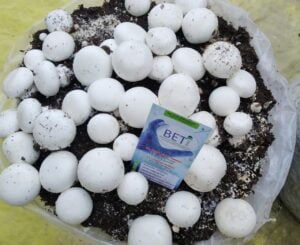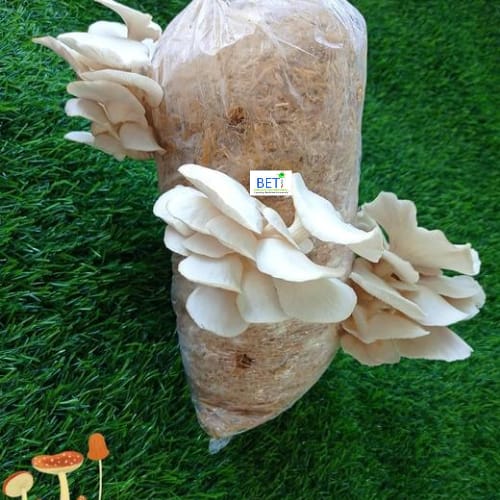Due to the changing climate, ever-increasing population, decreasing soil yield and water scarcity, there is a need for new means of farming, new technology and growing crops considered as super foods. Mushrooms have been used throughout the world for thousands of years, both as food and medicine. Mushroom is becoming very popular as a delicious food in our country too. It is a rich source of nutrition and covers a major part of healthy foods. The amount of fat in mushrooms is absolutely low, due to which it is a good diet for heart and diabetic patients. Along with this, it is rich in protein, mineral salts and vitamins, as well as 9 types of amino acids are found useful for mankind. Vitamin D is also found in mushrooms, which is helpful in increasing immunity, due to which it is a good nutritious food for vegetarians. About 37 metric tons of mushrooms are produced worldwide. Nowadays, about 0.13 metric tonnes of mushroom is being grown in our country per year, which is very less due to increasing demand and population. India being an agricultural country, we generate huge amount of residues, which farmers are not able to manage. This big problem can be solved by mushroom cultivation.

Due to the use of traditional agricultural residues to grow mushrooms, the problem of pollution is also solved to a great extent. Mushroom cultivation does not require land or soil, they can be grown directly on the residue of crops or by making compost. Commercially, four types of mushrooms are produced in our country. The most popular of these is the button mushroom (Agaricus bisporus), followed by Dhingri (Pleurotus species), Milky (Calocybe species) and Paddy Straw (Volvariella species). Before starting their production commercially, it is more beneficial to take training from experts before starting commercial production. Although, by creating an artificial environment (control unit), one variety of mushroom can be grown throughout the year, but due to high budget and space requirement, most of the production is seasonal. Every year BETi Innovative Pvt. Ltd. conducts (https://biotechera.com) training programs on all seasonal varieties for production of all mushrooms from which mushroom growers and newcomers can take advantage. Here the details of their production method are being given in brief. Most of the production of White Button Mushroom in our country is seasonal. It is cultivated in the traditional way. Generally, manure is made by a long method, so the yield is very low. Apart from this, more yield is obtained from the compost made in an air-conditioned and controlled unit. However, the mushroom yield has increased in the last few years as a result of introduction of better agro-technical practices. Generally, the cultivation of white button mushroom requires technical skill and compost. Among other factors, this system requires moisture, two different temperatures for seedling growth (spawn run) 22-25°C, for reproductive stage (fruit formation): 14-16°C. , Moisture: 85-95 percent etc.

Pleurotus is the scientific name for oyster mushroom. In many parts of India, it is known as Dhingri. There are many species of this mushroom, for example: – Pleurotus ostreatuss, P. sajor-caju, P. florida, P. sapidus, P. flabellatus, etc. It can be started with low budget in a room of 10 x 10 ft. at temperatures between 25 to 28 degrees Celsius. The scientific name of the species Milky Mushroom is Calocybe. It is also known as dudhiya mushroom. It can be cultivated at temperatures between 25 to 35 degree C. And this species can also be easily grown on the agriculture waste without making compost in a small room at low cost during the summer season. Its cultivation is very popular in South India. Paddy straw mushroom’ scientific name is volvariella and in common language it is known as parali mushroom because it is usually cultivated on straw or para. Due to this reason stubble or rice growing states like Orissa, W. Bengal Chhattisgarh, it is being cultivated on a large scale. Mushroom growing is a business that requires patience and intelligent care, and a skill that can be developed through expertise and experience. If the right species are selected according to the favorable season, then seasonal cultivation of mushrooms can be done easily throughout the year. For example, button mushroom from September to March, oyster mushroom (almost all year) from July to March and milky mushroom or paddy straw mushroom from April to August.

Dr. Pooja Dubey Pandey (M.Sc. & Ph.D. Biotechnology)
Founder & Director BETi Innovative Pvt. Ltd.
8839575166 //8839819024

Hi